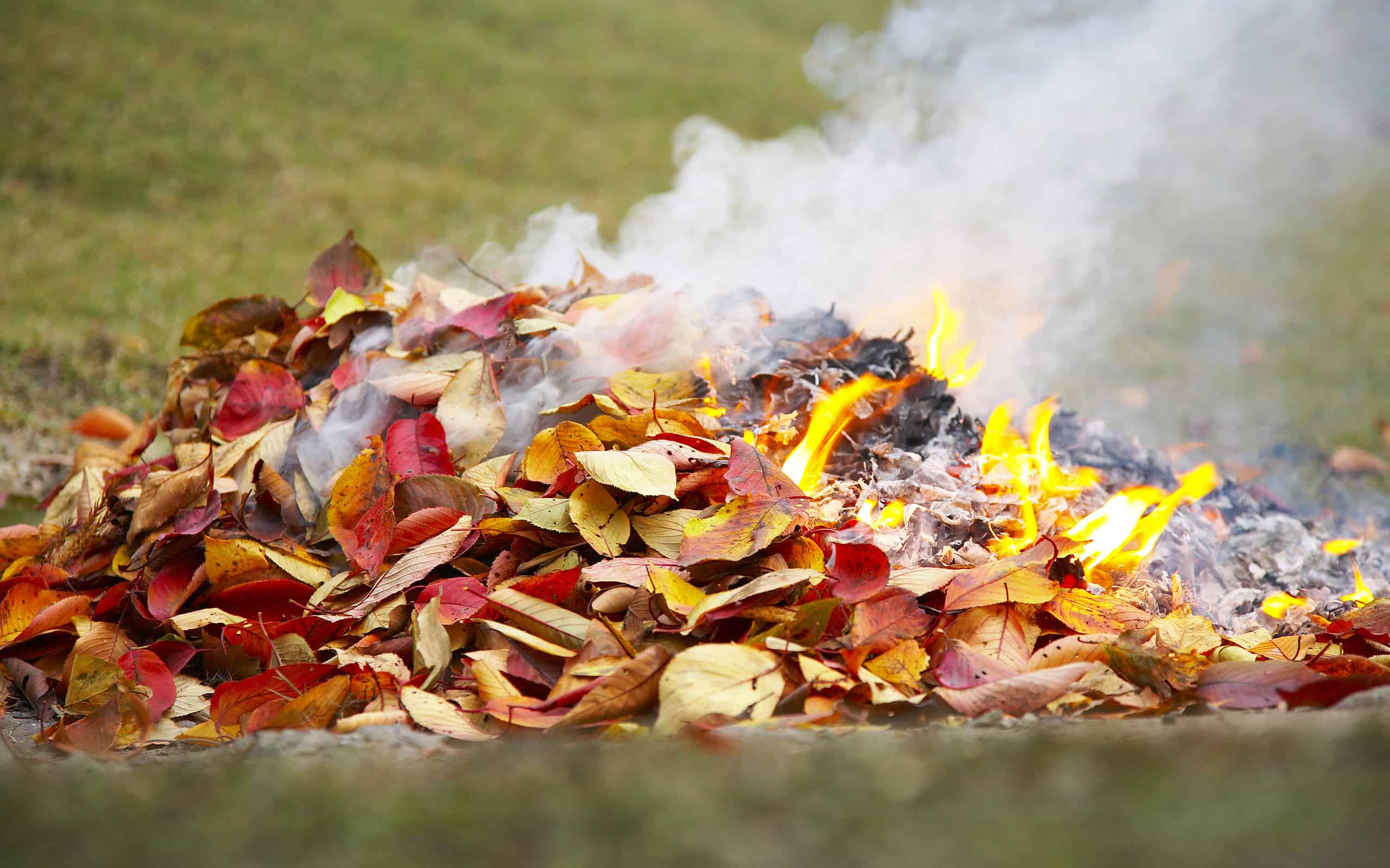After spending hours cleaning your yard, you probably want to find the quickest way to get rid of your leaves. You may be tempted to add them to your fire on a cold day. Although this seems like a convenient way to use lawn waste, it’s far from the safest. From the many health risks to the legality of the choice, you’ll want to think twice before using leaves as kindling. Keep reading to discover the seven reasons you should never burn leaves in your fire.
1. Creates a Fire Hazard
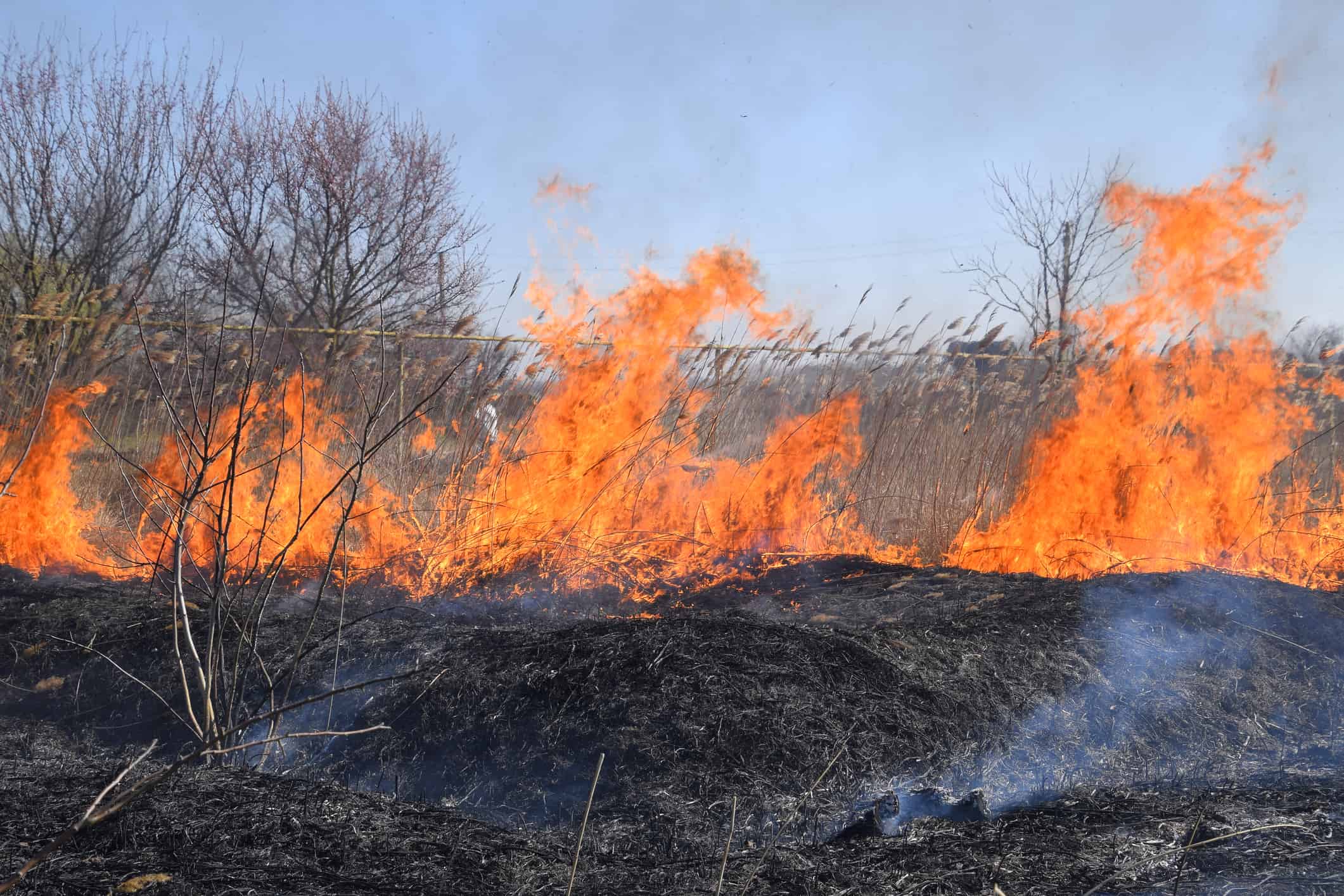
Dry grass, trees, and leaves are flammable and can start a wildfire if ignited.
©Leonid Eremeychuk/iStock via Getty Images
One of the reasons you should never burn leaves in your fire is creating a fire hazard. A simple fire can quickly get out of hand. If you’re burning leaves in a fire outdoors, a gust of wind can carry the leaves and burning embers elsewhere. What starts as a controlled fire in your home or yard can cause a devastating fire that affects your community.
Dry areas and those experiencing drought conditions are at a greater wildfire risk. Grass and trees dry out and become flammable, increasing the potential for ignition and the rate at which fire can spread. Fires can double in size in seconds, producing unbearable heat and toxic smoke.
2. Contributes to Air Pollution
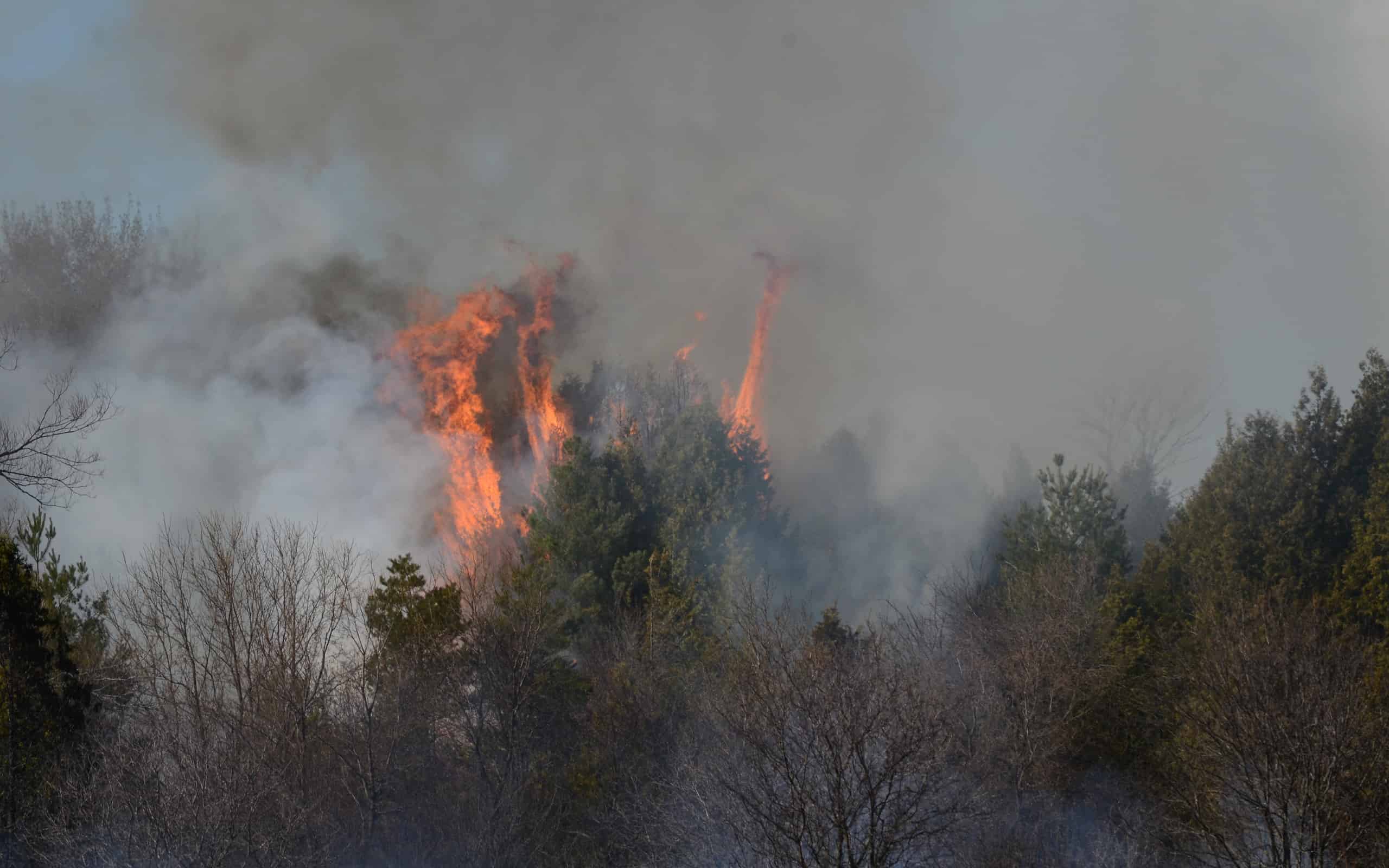
Burning leaves produce harmful air pollutants.
©Bob Hilscher/iStock via Getty Images
The leaves alone aren’t the cause of pollution. According to the EPA, the smoke produced from burning leaves contains toxic, irritating, and carcinogenic particles. These pollutants negatively impact the air quality and cause airborne health problems. Fire smoke is the collection of solid, liquid, and gas particles that remain unburned in the air after combustion.
Burning leaves produce particulates and harmful particles called hydrocarbons – a group of chemicals containing hydrogen and carbon atoms. Gasoline and kerosene are common hydrocarbons. These particles become dangerous when they enter the lungs because they cause permanent lung damage, seizures, irregular heart rhythms, kidney and lung damage, and even death.
3. Causes Allergies
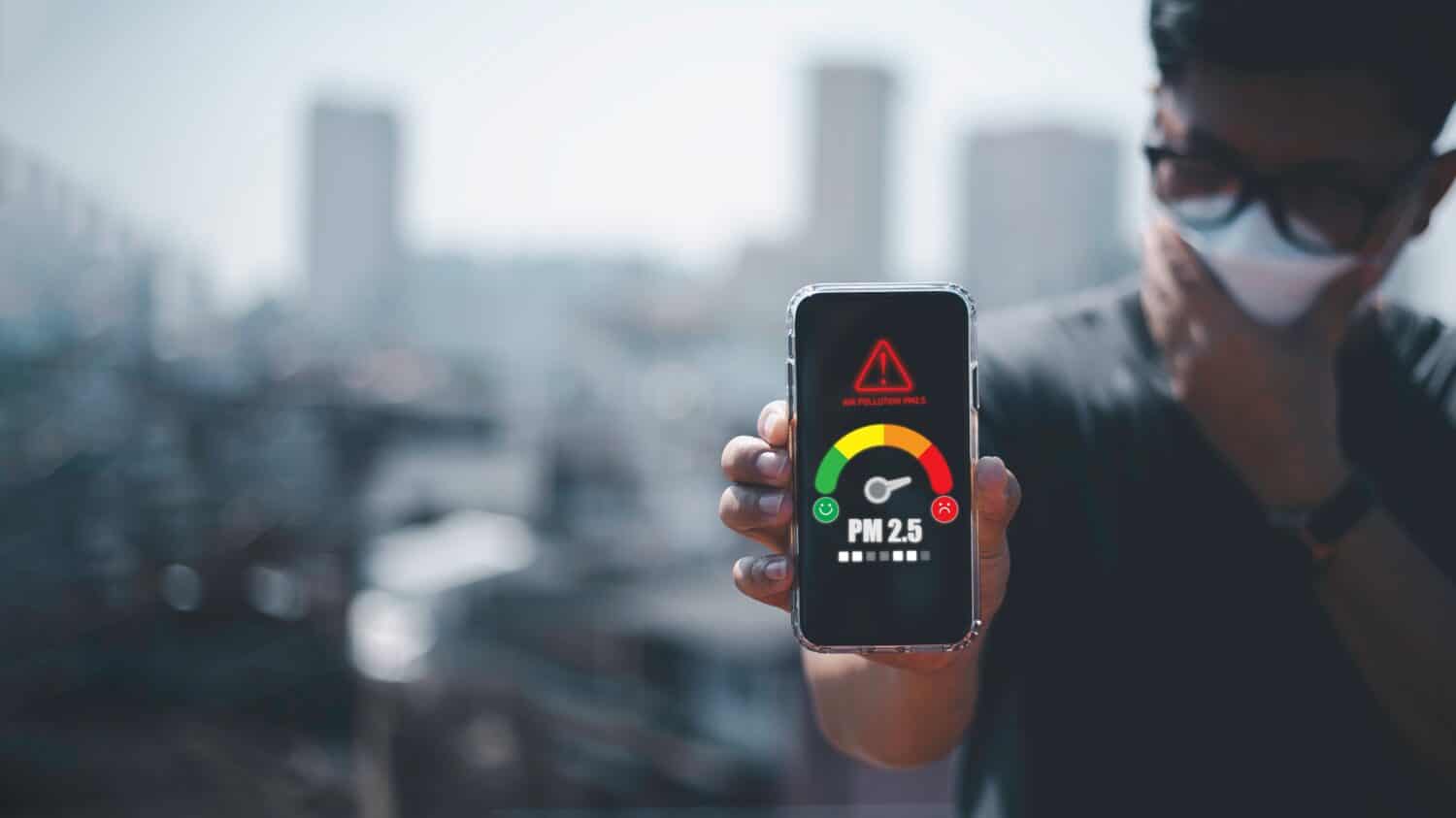
The smoke from burning leaves produces respiratory irritants that make the air unhealthy to breathe.
©Borri_Studio/Shutterstock.com
Fire smoke is a dangerous irritant to the eyes, ears, nose, throat, and lungs. Everyone can be affected, but individuals with allergies and breathing problems can experience more severe reactions. Young children, pregnant people, and the elderly are also at a greater risk of experiencing adverse symptoms from the smoke produced by burning leaves.
Damp leaves take longer to burn, producing more smoke than dry leaves. Damp leaves are also more likely to release hydrocarbons. The irritating particles and gasses can temporarily aggravate allergies or cause a respiratory infection.
4. Contributes to Lung Damage
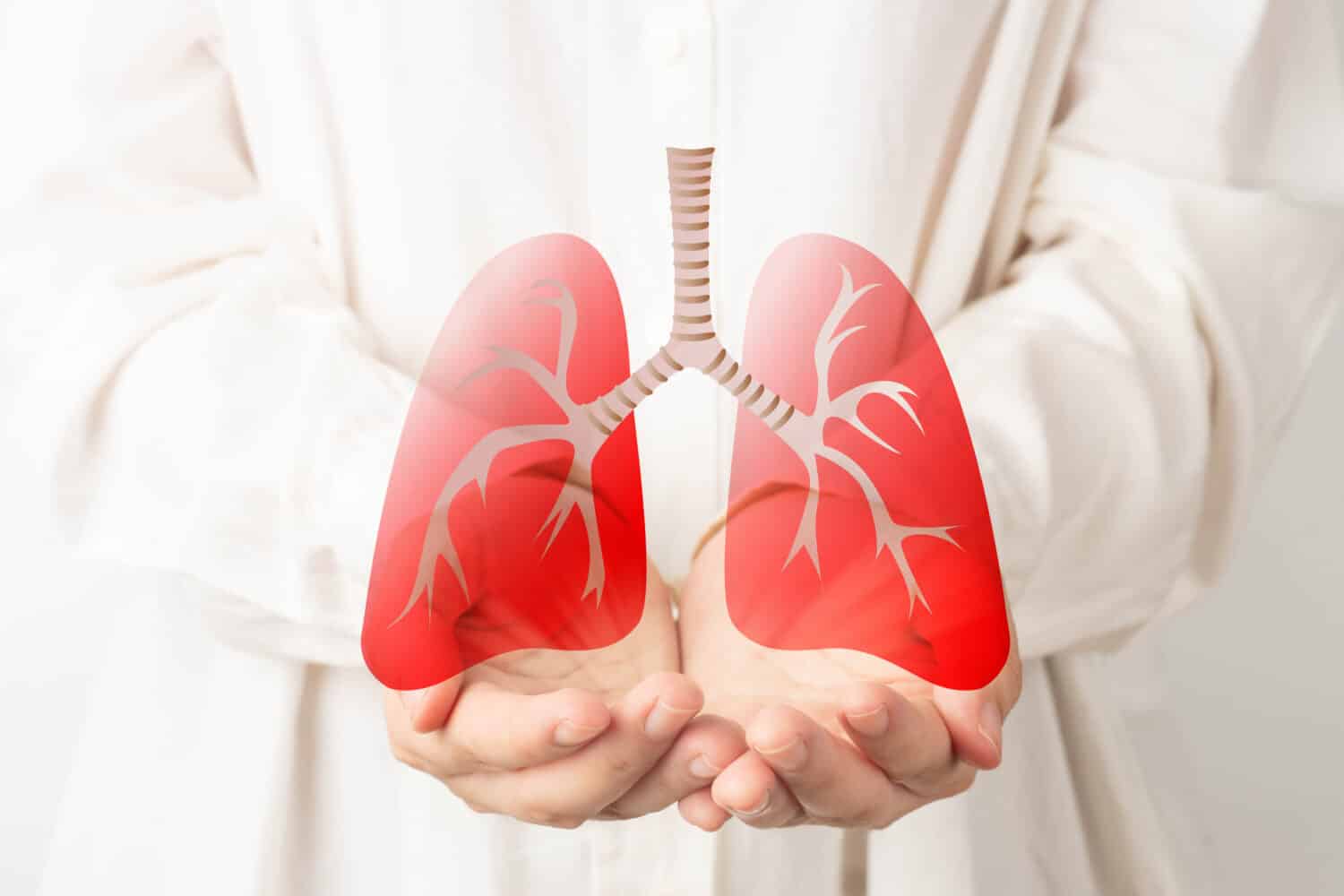
Smoke and hydrocarbons can cause long-term lung damage.
©Orawan Pattarawimonchai/Shutterstock.com
The microscopic particles present in the leaf smoke can stay in the lungs for years after exposure. These particles can cause infections and permanent respiratory damage. Those with asthma, COPD, emphysema, or other conditions that make it challenging to breathe can experience worsening symptoms.
Children are the most vulnerable. Their bodies are not fully developed, and their height puts them closer to the ground than most adults. As a result, they often inhale more smoke and are more likely to experience long-lasting effects. In fact, the chemical byproducts from burning leaves are a potential contributor to lung cancer.
5. Increases the Risk of Heart Disease

Inhaling the microscopic particles produced by burning leaves increases the chance of heart disease.
©arto_canon/iStock via Getty Images
Another reason you should never burn leaves in your fire is increasing the risk of heart disease. Most people are familiar with fire smoke’s impact on breathing and the overall respiratory system. However, it also affects cardiovascular health. In fact, air pollution that results from the particles in burning leaves increases the risk of heart disease.
The hydrocarbons from burning leaves are small enough to reach deep parts of the lungs. The particles are then absorbed into the bloodstream. The microscopic particles also trigger an inflammatory response that can worsen symptoms in those with heart disease. Symptoms include heart palpitations, fatigue, light-headedness, shortness of breath, and pain or tightness in the chest. Individuals even risk having a heart attack.
6. Carbon Monoxide Poisoning
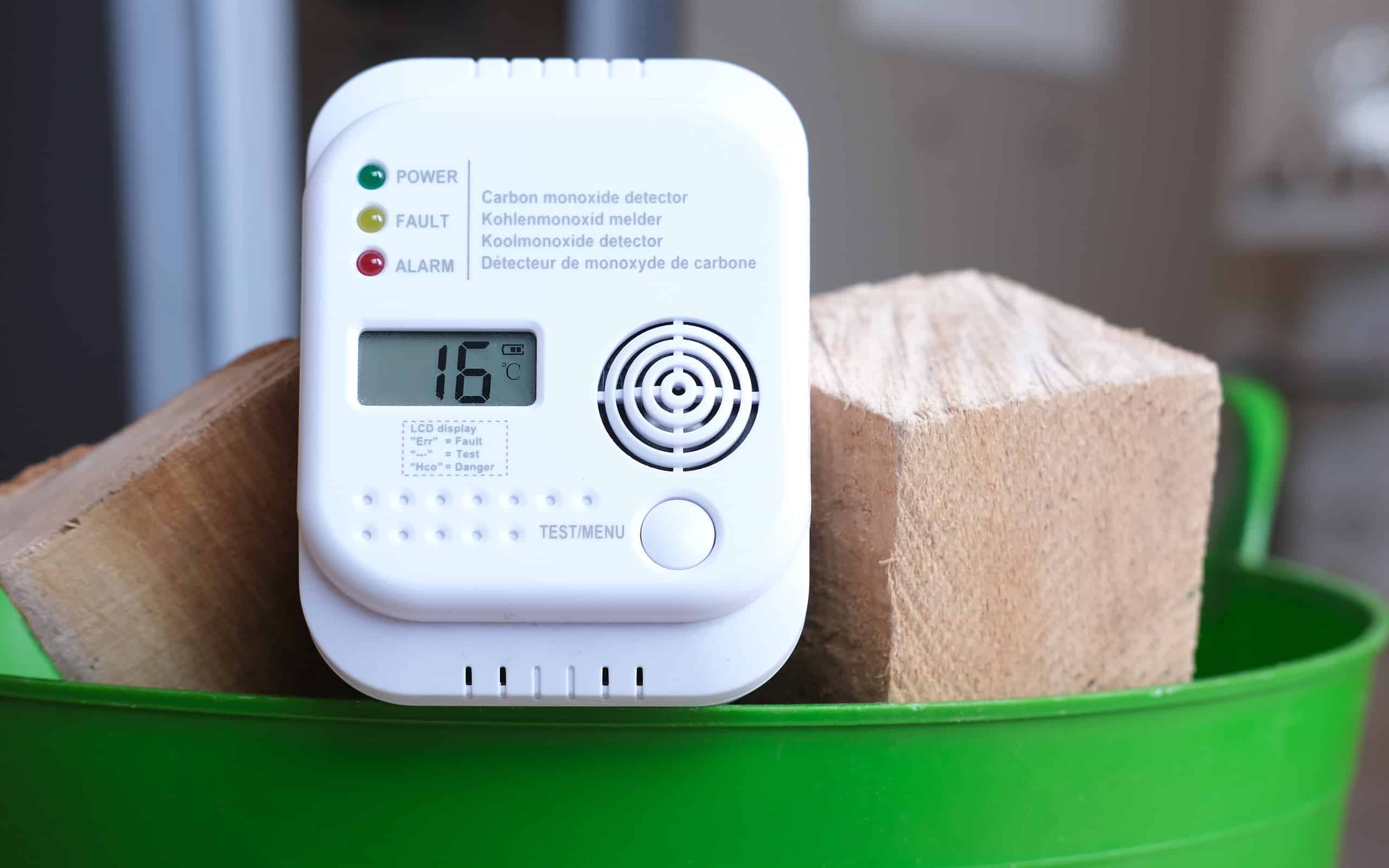
Carbon monoxide is a poisonous gas produced by smoldering leaves.
©Karl-Hendrik Tittel/iStock via Getty Images
The risk of carbon monoxide poisoning increases during the winter as people try to keep their homes warm. In fact, nearly 100,000 visit the emergency department, with over 400 people dying from accidental carbon monoxide poisoning every year. Carbon monoxide is an invisible gas that reduces the amount of oxygen your red blood cells can carry, preventing your brain from receiving the oxygen it needs to function.
You risk carbon monoxide poisoning due to incomplete burning from smoldering leaves. Creating a fire in an unventilated area increases the risk. Carbon monoxide poisoning is the most deadly reason you should never burn your leaves in your fire. Poisoning can occur between five minutes to two hours, depending on the gas concentration.
7. It’s Illegal
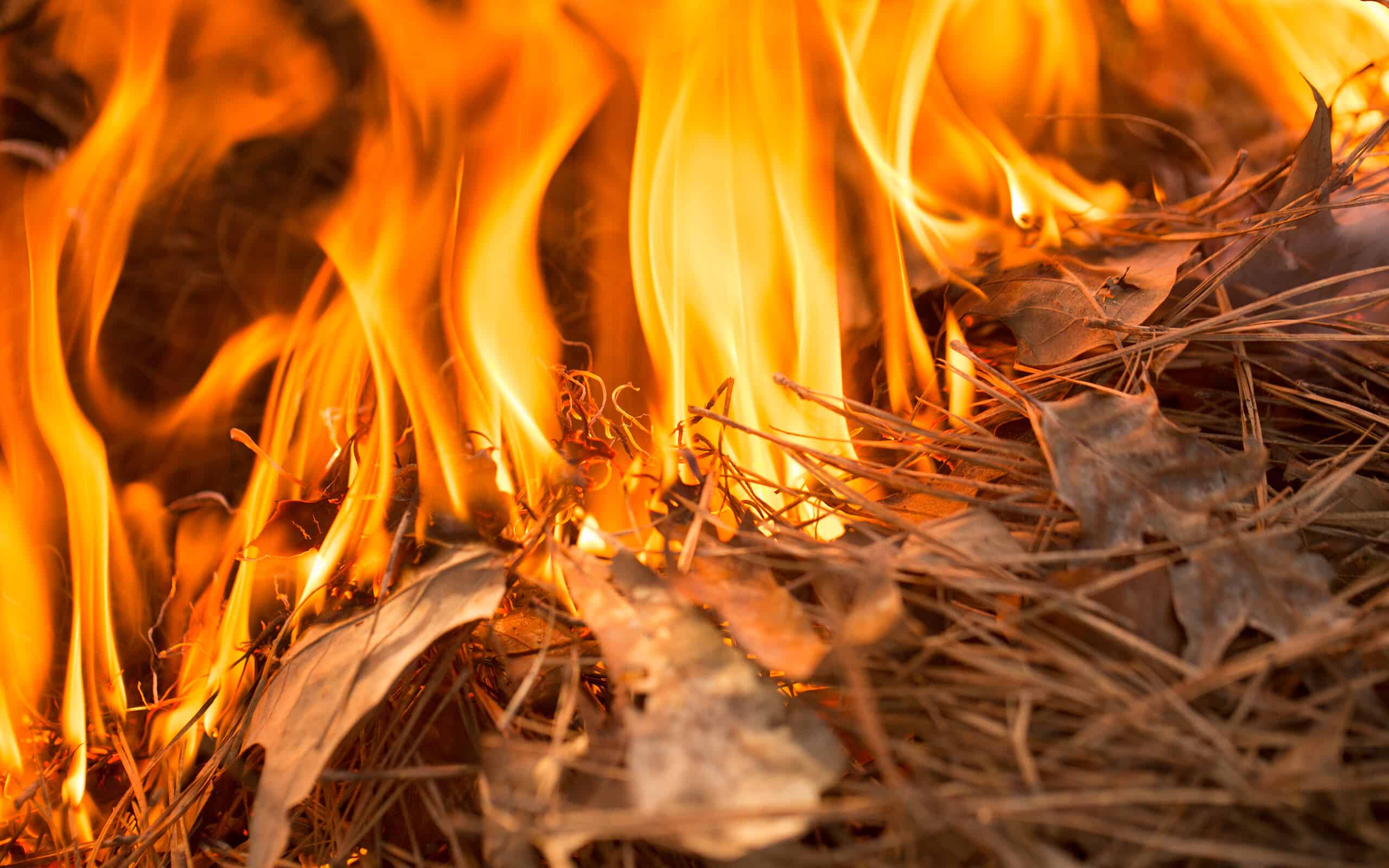
Burning leaves and other yard waste is illegal in many areas due to the many hazards it creates.
©Jenniveve84/iStock via Getty Images
In addition to the most harmful reasons you should never burn leaves in your fire; it’s also illegal in many areas. Check with your local fire department to find out what the rules are when it comes to burning leaves in your yard. Your city will have guidelines for any open burn or recreational fire on private properties.
Even if it’s not against the law in your city, the health risks associated with adding leaves to a fire should be enough to outweigh the few pros.
Thank you for reading! Have some feedback for us? Contact the AZ Animals editorial team.

